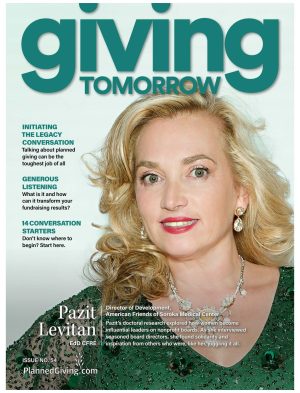Has something like this ever happened to you? You’re at a development conference, sitting at a table with a stranger. You introduce yourself … and the person takes your friendliness as an invitation to go all in. Next thing you know, they’re telling you about a recent operation (including all the gory details) and finish it off by yanking up their shirt for a grand reveal of a very large incision scar.
Holy TMI, Batman!
We often spout “TMI” — too much information — when someone starts sharing way too much (I’m still trying to unsee that scar). But TMI also applies to fundraisers. Ask yourself: “Am I the kind of person who can’t get started on a fundraising project until I have 100% donor information?”
How Much Donor Information is Too Much?
I’m not suggesting you go full speed ahead without doing some homework. Say you’re planning to visit a prospective donor. You’ll need to find out more about this person — maybe where they went to school, what they do for a living, what causes they support, if they’re famous for anything, and something about their family.
But there comes a time when enough donor information is more than enough. Here’s where former Secretary of State and retired General Colin Powell can help you get off your duff. His “40-70 Rule” goes like this: If you have less than 40% of the information you need to get started, you’re not ready.
Now, back to our example. If you know only your donor’s alma mater and where he currently works or used to work, that’s not enough to make a meaningful connection; to help him understand why supporting your organization would be beneficial to him.
If you have 70% of the donor information you need, however, it’s time to set up the visit. Now you also know something about his family, what causes he’s supported in the past, including any prior gifts to your organization, as well as notable achievements and interests. You’ll be in a good position to make a case for connecting him to your cause.
The Sweet Spot
Powell cautions against aiming for 100% of the knowledge before starting a project. What does it really matter that you know your donor can’t stand strawberries, wears a size 11 shoe, and has a mole above his left ear? Some donor information isn’t useful at all, and other donor information is nice to have, but not really necessary to getting the gift.
According to Powell, the knowledge sweet spot a professional needs to make an informed decision and get started falls between 40 and 70 percent. Where there are gaps in your knowledge, intuition makes for an excellent guide.
According to Patrick King’s book The Science of Getting Started: How to Beat Procrastination, Summon Productivity, and Stop Self-Sabotage, “When you try to achieve more than 70% information … your lack of speed can destroy your momentum or stem your interest, effectively meaning nothing’s going to happen. There is a high likelihood of gaining nothing further from surpassing this threshold.”
If Colin Powell could win a major victory in the Persian Gulf War with the 40-70 rule, it can certainly help you gather enough information to call on a prospective donor or start any new project.
If you’re thinking of starting a planned gift program, or enhancing the one you already have in place, don’t worry if you don’t have 40% of the information yet. We’re here to help you reach your own sweet spot.
Just, please — don’t show us your scars.






